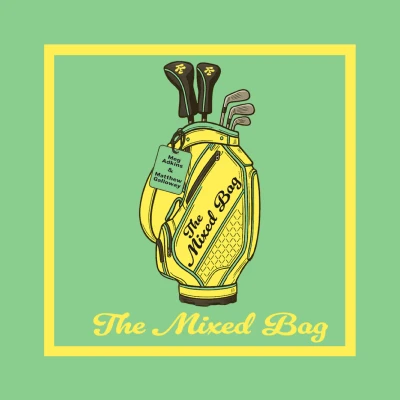articles
Competitive Golf
Gambling
Paulie's Picks: 2025 Open Championship Best Bets
3 min read
July 16, 2025
Competitive Golf
Professional Golf
2025 Open Championship Thursday Morning Coffee Golf Gameplan
3 min read
July 15, 2025
Courses
Design Notebook
Design Notebook: The State of the Open Championship Rota
10 min read
July 15, 2025
Competitive Golf
Professional Golf
Breaking Down the Field for the 2025 Open Championship at Royal Portrush
10 min read
July 14, 2025
Courses
The Carton
What Makes the Greens So Special at Royal Portrush?
3 min read
July 14, 2025
Courses
The Carton
Video: The Architecture of 2025 Open Championship Host Royal Portrush
2 min read
July 14, 2025
Competitive Golf
Professional Golf
Chris Gotterup Wins Major Tune-Up at 2025 Scottish Open
5 min read
July 14, 2025
Competitive Golf
Professional Golf
Grace Under Pressure
5 min read
July 14, 2025
Competitive Golf
Gambling
Paulie's Picks: 2025 Open Championship Longshots
3 min read
July 13, 2025
Competitive Golf
Gambling
Paulie's Picks: 2025 Open Championship Preview
3 min read
July 11, 2025
Courses
The Carton
Northern Ireland Golf Guide
7 min read
July 11, 2025
Competitive Golf
Professional Golf
Leona Maguire's Ace, Charley Hull's Collapse and More From the Evian Championship
3 min read
July 11, 2025
Eggstracurriculars
The Carton
Derry Debriefs, Volume III
5 min read
July 11, 2025
Eggstracurriculars
The Carton
Weekend Chat: Great Britain & Ireland Bucket List
5 min read
July 11, 2025
Eggstracurriculars
The Carton
A Guide to Derry, Northern Ireland
5 min read
July 10, 2025
Eggstracurriculars
The Carton
Eye on Golf with the Shotgun Start: FedEx Cup Bubble Watch
3 min read
July 9, 2025
No results found.
Podcasts
The insights and entertainment you didn't know you needed from the world of golf

The Shotgun Start

The Fried Egg Golf Podcast

Designing Golf

The Mixed Bag

Get a Grip with Shane Bacon

Latest Episodes
Podcast
The Fried Egg Golf Podcast
With

Latest Episodes

Latest Episodes
Podcast
With

Latest Episodes

Latest Episodes
Fried Egg Golf Club
Get full access to exclusive benefits from Fried Egg Golf
- Member-only content
- Community discussions forums
- Member-only experiences and early access to events













.webp)









